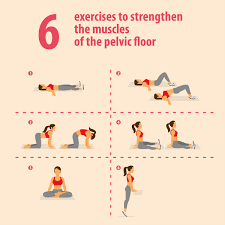A nurse in the emergency department is admitting a client who is experiencing an especially rapid labor (precipitous labor). She is at 40 weeks of gestation, has ruptured membranes, and the nurse observes the newborn's head crowning. The client tells the nurse she feels a strong urge to push. Which of the following instructions should the nurse make to help the mother have a more controlled birth?
"You should take a deep, cleansing breath and breathe naturally."
"You should go ahead and push as hard as you can to assist the delivery."
"You should try to blow or pant as the baby is being born to help avoid a toorapid birth."
"You should try to perform slowpaced breathing patterns."
The Correct Answer is C
A: Taking deep, cleansing breaths and breathing naturally is not the appropriate technique during the crowning phase of labor, as it can increase the risk of rapid birth and potential perineal trauma.
C: During a precipitous labor with the baby's head crowning, the nurse should encourage the mother to perform blowing or panting breaths during contractions. This technique helps to slow down the delivery process and allows the perineum to stretch gradually, reducing the risk of tearing or other trauma.
B: In the case of precipitous labor, actively pushing as hard as possible can increase the risk of rapid birth and potential complications for both the mother and the baby.
D: Slowpaced breathing patterns are not recommended during the crowning phase of labor, as they may not effectively control the birth process.
Nursing Test Bank
Naxlex Comprehensive Predictor Exams
Related Questions
Correct Answer is C
Explanation
Choice A: While an upright position is generally beneficial during labor to improve uterine contractions and fetal positioning, it is not the priority in this situation of hypotension.
Choice B: Preparing for a cesarean birth is not indicated solely based on the blood pressure reading. Cesarean birth should be considered based on the overall assessment and clinical condition of the client and baby.
Choice C: The client's blood pressure reading of 82/52 mm Hg indicates hypotension. In this situation, the nurse should assist the client in turning onto her side to relieve pressure on the vena cava and improve blood flow to the placenta and the baby. Lying supine can compress the vena cava, leading to decreased venous return and reduced cardiac output, which may negatively affect fetal oxygenation and maternal wellbeing.
Choice D: Preparing for an immediate vaginal delivery is not the priority at this moment. The nurse should first address the hypotension and improve maternal blood flow before proceeding with delivery.
Correct Answer is A
Explanation
Choice A: Kegel exercises are specifically designed to strengthen the pelvic floor muscles, which play a crucial role during childbirth. Strengthening these muscles can aid in better control during labor and delivery, facilitating stretching and reducing the risk of injury.
Choice B: Kegel exercises do not have a direct impact on preventing constipation during pregnancy. However, they may help improve bowel control and prevent fecal incontinence.
Choice C: While Kegel exercises can improve posture and core strength, their primary benefit lies in strengthening the pelvic muscles, not directly reducing backaches throughout pregnancy.
Choice D: Kegel exercises are not intended to prevent stretch marks on the abdomen. Stretch marks are caused by the stretching of the skin during pregnancy and are not related to pelvic muscle exercises.

Whether you are a student looking to ace your exams or a practicing nurse seeking to enhance your expertise , our nursing education contents will empower you with the confidence and competence to make a difference in the lives of patients and become a respected leader in the healthcare field.
Visit Naxlex, invest in your future and unlock endless possibilities with our unparalleled nursing education contents today
Report Wrong Answer on the Current Question
Do you disagree with the answer? If yes, what is your expected answer? Explain.
Kindly be descriptive with the issue you are facing.
